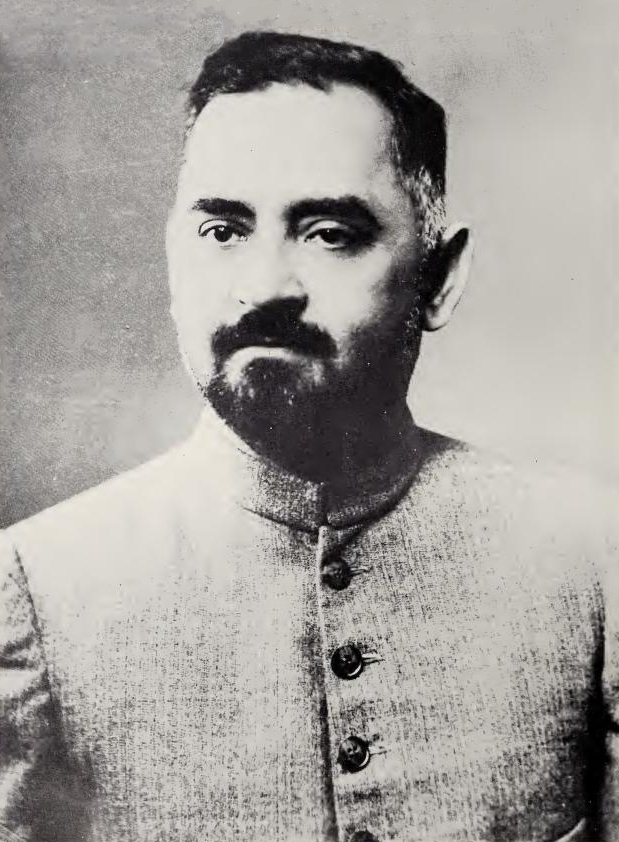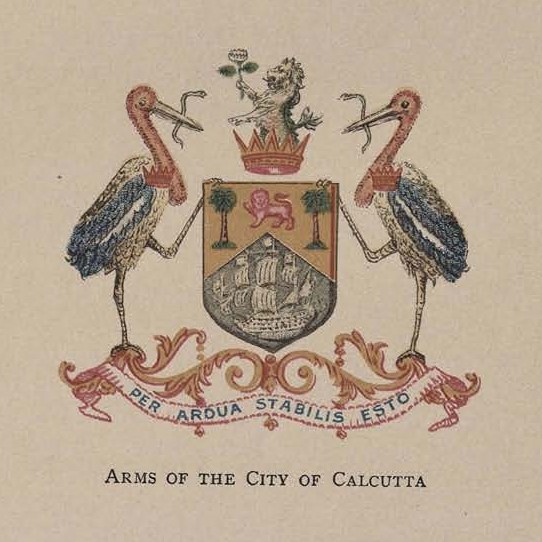|
Habib Rahman (architect)
Habib Rahman (1915 – 1995) was an Indian architect who worked on the Delhi Zoological Park, Gandhi Ghat, and Rabindra Bhavan in New Delhi. Biography Habib Rahman obtained his Bachelor of Engineering in 1939 in Calcutta. He studied at the MIT and obtained his Masters in Architecture in 1944 (the first Indian to complete this programVijayta LalwaniIn photos: Architect Habib Rahman and the making of New Delhi in Nehru’s vision ''Scroll.in'', 6 October 2019). From 1944 to 1946, he worked at the architecture firms of Lawrence B. Anderson, William Wurster Walter Gropius, and Ely Jacques Kahn in Boston.Ram RahmanTribute to Habib Rahman ''Tribute'', March–April 1996 Habib Rahman returned to Calcutta during the 1946 Calcutta riots and became the Senior Architect of the government of West Bengal from 1947 to 1953. Starting in 1953, Habib Rahman became the Senior Architect of the Central Public Works Department in New Delhi (and became Chief Architect in 1970). From 1974 to 1977, ... [...More Info...] [...Related Items...] OR: [Wikipedia] [Google] [Baidu] |
Calcutta
Kolkata (, or , ; also known as Calcutta , List of renamed places in India#West Bengal, the official name until 2001) is the Capital city, capital of the Indian States and union territories of India, state of West Bengal, on the eastern bank of the Hooghly River west of the border with Bangladesh. It is the primary business, commercial, and financial hub of East India, Eastern India and the main port of communication for North-East India. According to the 2011 Indian census, Kolkata is the List of cities in India by population, seventh-most populous city in India, with a population of 45 lakh (4.5 million) residents within the city limits, and a population of over 1.41 crore (14.1 million) residents in the Kolkata metropolitan area, Kolkata Metropolitan Area. It is the List of metropolitan areas in India, third-most populous metropolitan area in India. In 2021, the Kolkata metropolitan area crossed 1.5 crore (15 million) registered voters. The ... [...More Info...] [...Related Items...] OR: [Wikipedia] [Google] [Baidu] |
Central Public Works Department
The Central Public Works Department (Hindi: केंद्रीय लोक निर्माण विभाग), commonly referred to as the CPWD, is a premier Central Government authority in charge of public sector works. The Central Public Works Department, under the Ministry of Urban Development now MoHUA (Ministry of Housing and Urban Affairs), deals with buildings, roads, bridges, flyovers and other complicated structures including stadiums, auditoriums, laboratories, bunkers, border fencing and border roads (hill roads). The CPWD came into existence in July 1854 when Lord Dalhousie established a central agency for execution of public works and set up Ajmer Provincial Division. It has now grown into a comprehensive construction management department, which provides services from project conception to completion, and maintenance management. It is headed by the Director General (DG) who is also the Principal Technical Advisor to the Government of India. The regions and sub ... [...More Info...] [...Related Items...] OR: [Wikipedia] [Google] [Baidu] |
Odissi
Odissi (), also referred to as Orissi in old literature, is a major ancient Indian classical dance that originated in the Hindu temple, temples of Odisha – an eastern coastal state of India.Odissi ''Encyclopædia Britannica'' (2013) Odissi, in its history, was performed predominantly by women, and expressed religious stories and spirital ideas, particularly of Vaishnavism through songs written and composed according to the ''ragas'' & ''talas'' of Odissi music by ancient poets of the state. Odissi performances have also expressed ideas of other traditions such as those related to Hindu Gods Shiva and Surya, as well as Hindu Goddesses (Shaktism)., Quote: "There are other temples too in Odisha where the ''maharis'' used to dance. Besides the temple of ... [...More Info...] [...Related Items...] OR: [Wikipedia] [Google] [Baidu] |
Padma Bhushan
The Padma Bhushan is the third-highest civilian award in the Republic of India, preceded by the Bharat Ratna and the Padma Vibhushan and followed by the Padma Shri. Instituted on 2 January 1954, the award is given for "distinguished service of a high order...without distinction of race, occupation, position or sex." The award criteria include "service in any field including service rendered by Government servants" including doctors and scientists, but exclude those working with the public sector undertakings. , the award has been bestowed on 1270 individuals, including twenty-four posthumous and ninety-seven non-citizen recipients. The Padma Awards Committee is constituted every year by the Prime Minister of India and the recommendations for the award are submitted between 1 May and 15 September. The recommendations are received from all the state and the union territory governments, as well as from Ministries of the Government of India, Bharat Ratna and Padma Vibhushan a ... [...More Info...] [...Related Items...] OR: [Wikipedia] [Google] [Baidu] |
Padma Shri
Padma Shri (IAST: ''padma śrī''), also spelled Padma Shree, is the fourth-highest Indian honours system, civilian award of the Republic of India, after the Bharat Ratna, the Padma Vibhushan and the Padma Bhushan. Instituted on 2 January 1954, the award is conferred in recognition of "distinguished contribution in various spheres of activity including the arts, education, industry, literature, science, acting, medicine, social service and public affairs". It is awarded by the Government of India every year on Republic Day (India), India's Republic Day. History Padma Awards were instituted in 1954 to be awarded to citizens of India in recognition of their distinguished contribution in various spheres of activity including the arts, education, Private industry, industry, literature, science, acting, medicine, social service and Public affairs (broadcasting), public affairs. It has also been awarded to some distinguished individuals who were not citizens of India but did contri ... [...More Info...] [...Related Items...] OR: [Wikipedia] [Google] [Baidu] |
Fakhruddin Ali Ahmed
Fakhruddin Ali Ahmed (13 May 1905 – 11 February 1977) was an Indian lawyer and politician who served as the fifth president of India from 1974 to 1977. Born in Delhi, Ahmed studied in Delhi and Cambridge and was called to the bar from the Inner Temple, London in 1928. Returning to India, he practiced law in Lahore and then in Guwahati where he went on to become the Advocate General of Assam in 1946. Beginning a long association with the Indian National Congress in the 1930s, Ahmed was finance minister of Assam in the Gopinath Bordoloi ministry in 1939 and again from 1957 to 1966 under Bimala Prasad Chaliha. He was made a cabinet minister by Prime Minister Indira Gandhi in 1966 and was in charge of ministries including Power, Irrigation, Industries and Agriculture until 1974 when he was elected president of India. As president, Ahmed imposed the Emergency in August 1975 and gave his assent to numerous ordinances and constitutional amendments that severely restricted ci ... [...More Info...] [...Related Items...] OR: [Wikipedia] [Google] [Baidu] |
Zakir Husain (politician)
(8 February 1897 – 3 May 1969) known as Dr. Zakir Husain, was an Indian educationist and politician who served as President of India from 13 May 1967 until his death on 3 May 1969. Born into an Afridi Pashtun family in Hyderabad, Husain studied in Etawah, the Muhammadan Anglo-Oriental College, Aligarh and the University of Berlin from where he obtained a doctoral degree in economics. He was a founding member of the Jamia Milia Islamia of which he served as Vice-chancellor during 1926 to 1948. He was closely associated with Mahatma Gandhi and was chairman of the Basic National Education Committee which framed a new educational policy known as Nai Talim with its emphasis on free and compulsory education in the first language. Appointed Vice Chancellor of the Aligarh Muslim University in 1948, he helped retain it as a national institution of higher learning. For his services to education, he was awarded the Padma Vibhushan in 1954 and was a nominated member of the Indian ... [...More Info...] [...Related Items...] OR: [Wikipedia] [Google] [Baidu] |
Abul Kalam Azad
Abul Kalam Ghulam Muhiyuddin Ahmed bin Khairuddin Al-Husseini, Hussaini Azad (; 11 November 1888 – 22 February 1958) was an Indian Indian independence movement, independence activist, Islamic theologian, writer and a senior leader of the Indian National Congress. Following India's independence, he became the First Minister of Education in the Indian government. He is commonly remembered as Maulana Azad; the word Maulana is an honorific meaning 'Our Master' and he had adopted ''Azad'' (''Free'') as his pen name. His contribution to establishing the education foundation in India is recognised by celebrating his birthday as National Education Day across India. As a young man, Azad composed poetry in Urdu, as well as treatises on religion and philosophy. He rose to prominence through his work as a journalist, publishing works critical of the British Raj and espousing the causes of Indian nationalism. Azad became the leader of the Khilafat Movement, during which he came into c ... [...More Info...] [...Related Items...] OR: [Wikipedia] [Google] [Baidu] |
World Health Organization
The World Health Organization (WHO) is a specialized agency of the United Nations responsible for international public health. The WHO Constitution states its main objective as "the attainment by all peoples of the highest possible level of health". Headquartered in Geneva, Switzerland, it has six regional offices and 150 field offices worldwide. The WHO was established on 7 April 1948. The first meeting of the World Health Assembly (WHA), the agency's governing body, took place on 24 July of that year. The WHO incorporated the assets, personnel, and duties of the League of Nations' Health Organization and the , including the International Classification of Diseases (ICD). Its work began in earnest in 1951 after a significant infusion of financial and technical resources. The WHO's mandate seeks and includes: working worldwide to promote health, keeping the world safe, and serve the vulnerable. It advocates that a billion more people should have: universal health care coverag ... [...More Info...] [...Related Items...] OR: [Wikipedia] [Google] [Baidu] |
Kolkata
Kolkata (, or , ; also known as Calcutta , the official name until 2001) is the capital of the Indian state of West Bengal, on the eastern bank of the Hooghly River west of the border with Bangladesh. It is the primary business, commercial, and financial hub of Eastern India and the main port of communication for North-East India. According to the 2011 Indian census, Kolkata is the seventh-most populous city in India, with a population of 45 lakh (4.5 million) residents within the city limits, and a population of over 1.41 crore (14.1 million) residents in the Kolkata Metropolitan Area. It is the third-most populous metropolitan area in India. In 2021, the Kolkata metropolitan area crossed 1.5 crore (15 million) registered voters. The Port of Kolkata is India's oldest operating port and its sole major riverine port. Kolkata is regarded as the cultural capital of India. Kolkata is the second largest Bengali-speaking city after Dhaka ... [...More Info...] [...Related Items...] OR: [Wikipedia] [Google] [Baidu] |
Barrackpore
Barrackpore (also known as Barrackpur) is a city and a municipality of urban Kolkata of North 24 Parganas district in the Indian state of West Bengal. It is also a part of the area covered by Kolkata Metropolitan Development Authority (KMDA). It is the headquarters of the Barrackpore subdivision. Etymology The name Barrackpore may have originated from the English word barracks, as it was the site of the first cantonment of the British East India Company. Alternatively, the '' Ain-i-Akbari'' suggests that the name comes from "Barbakpur". ''Manasa Vijay'', written by Bipradas Pipilai, refers to Talpukur (a place in Barrackpore) as "Charnak". History The earliest references to the Barrackpore region are found in the writings of the Greek navigators, geographers, chronicles and historians of the 1st century BC to the 3rd century AD. These authors generally referred to the country of a people variously called the Gangaridai (also Gangaridae or Gandaritai). By the 15th and 1 ... [...More Info...] [...Related Items...] OR: [Wikipedia] [Google] [Baidu] |







